In the ever evolving landscape of genetic engineering, the concept of gene drives has emerged as a powerful tool with the potential to revolutionize disease control and biodiversity management. However, as scientific strides bring us closer to manipulating entire populations of organisms, the promises for disease control come hand in hand with profound ethical considerations. In this exploration, we delve into the intricate world of gene drives, examining their mechanics, applications, and the ethical quandaries that surround this controversial field.
Understanding Gene Drives: Rewriting the Genetic Rulebook
In the realm of genetic engineering, the concept of gene drives represents a paradigm shift, offering the unprecedented ability to manipulate and propagate specific genes within populations. This revolutionary technology, often facilitated by CRISPR-Cas9, has the potential to reshape the genetic landscape of organisms, presenting both opportunities and challenges. Let’s delve into the intricate mechanics of gene drives, unraveling the intricacies that underpin this genetic rulebook rewrite.
The Mechanics of Gene Drives: CRISPR-Cas9 as a Molecular Scribe
At the heart of gene drives lies the precision tool of CRISPR-Cas9, a molecular scribe capable of editing the genetic code with unparalleled accuracy. Unlike traditional genetic engineering, which follows Mendelian inheritance patterns, gene drives enhance the transmission of specific genes to nearly 100% in offspring. This is achieved by leveraging CRISPR-Cas9 to edit the genes of an organism, ensuring that the alterations are replicated faithfully in successive generations.
CRISPR’s Gene Editing Precision
The CRISPR-Cas9 system operates as a genetic cut and paste tool, allowing researchers to target specific genes and modify them with surgical precision. The guide RNA component directs the Cas9 enzyme to the precise location in the genome, where it introduces edits, deletions, or insertions. This precise editing capability forms the backbone of gene drives, enabling the propagation of desired genetic changes throughout populations.
Non-Mendelian Inheritance
In traditional inheritance, genes have a 50% chance of being passed on to offspring. Gene drives disrupt this genetic equilibrium by ensuring that the edited genes are inherited at an extraordinarily high rate. This non-Mendelian inheritance pattern alters the genetic odds, favoring the spread of specific traits within populations and potentially leading to the rapid dissemination of desired genetic modifications.
Measuring the Drive’s Success
The success of a gene drive is measured by its ability to spread through populations. Scientists gauge this spread by monitoring the frequency of the edited genes in subsequent generations. A highly successful gene drive can rapidly and exponentially increase the prevalence of specific traits, paving the way for the targeted alteration of entire populations.
Active and Passive Gene Drives: Dynamics of Genetic Propagation
Gene drives can be classified into active and passive categories based on their modes of action. Active gene drives actively convert or copy themselves onto the homologous chromosome during the gene editing process. In contrast, passive gene drives rely on the CRISPR-Cas9 system to convert only one chromosome, with subsequent generations ensuring the spread of the edited gene through natural reproduction.
Synthetic Gene Drives: Crafting Custom Genetic Solutions
Researchers are exploring the development of synthetic gene drives, custom-designed for specific applications. These synthetic drives aim to address challenges such as resistance to natural gene drives or unintended ecological consequences. By fine tuning the genetic rules embedded in synthetic drives, scientists seek to optimize their efficiency while minimizing potential risks.
Biocontainment Strategies: Safeguarding Against Unintended Outcomes
The risk of unintended consequences looms large in the gene drive landscape. To mitigate this risk, scientists are actively researching biocontainment strategies. These strategies aim to design gene drives with built-in safeguards, such as self-limiting drives that lose their effectiveness over time or reversible drives that can be turned off if necessary.
Evolutionary Responses: Adapting to Gene Drive Pressures
In the ongoing genetic arms race, organisms subjected to gene drives may evolve mechanisms to resist or counteract the imposed genetic changes. Understanding these evolutionary responses is crucial for anticipating and managing potential challenges that may arise as a result of the continued use of gene drives in the wild.
Promises for Disease Control: Eradicating Vector-Borne Illnesses
One of the primary motivations behind the development of gene drives is the prospect of controlling and eradicating vector borne diseases. Insects like mosquitoes, responsible for transmitting deadly diseases such as malaria, dengue fever, and Zika virus, could be targeted with gene drives to disrupt their ability to carry and transmit pathogens. By altering the genetic makeup of mosquito populations, scientists envision a world where the prevalence of these diseases is significantly reduced.
Mice and Island Conservation: Tackling Invasive Species
Beyond disease control, gene drives offer a potential solution for addressing invasive species that threaten native ecosystems. In island conservation efforts, for instance, researchers are exploring the use of gene drives to modify the genetics of invasive rodents, such as mice, to suppress their populations and protect the biodiversity of isolated ecosystems.
Hardware and Software Required for Gene Drives
The development and deployment of gene drives involve a sophisticated integration of hardware and software components. From precise gene editing tools to computational frameworks for designing and modeling genetic alterations, the technology behind gene drives is multifaceted. Here’s an overview of the key hardware and software requirements in both domains:
Hardware Components:
Laboratory Equipment:
PCR Machines: Polymerase Chain Reaction machines are essential for amplifying specific DNA sequences, a crucial step in preparing target genes for editing.
Centrifuges: Used for separating cellular components and isolating DNA, RNA, or proteins.
Electroporation Devices: Facilitate the introduction of foreign genetic material into cells through the application of an electric field.
Gene Editing Tools:
CRISPR-Cas9 Systems: The cornerstone of gene drives, CRISPR-Cas9 enables precise gene editing by leveraging the Cas9 enzyme and guide RNA.
Synthetic Nucleases: Alternative gene-editing tools, such as TALENs (Transcription Activator-Like Effector Nucleases) or zinc finger nucleases, may be employed based on specific requirements.
Sequencing Platforms:
Next-Generation Sequencers: High-throughput DNA sequencers are crucial for verifying the success of gene edits and assessing the prevalence of edited genes within populations.
Bioreactors:
Cell Culture Bioreactors: Used for growing and maintaining cell cultures, especially when working with organisms that require in vitro propagation during gene drive research.
Microinjection Systems:
Microinjection Apparatus: Essential for introducing CRISPR-Cas9 components or edited genes directly into embryos or reproductive cells.
Bioinformatics Infrastructure:
High-Performance Computing (HPC) Clusters: Large-scale computational resources are necessary for processing and analyzing vast amounts of genomic data generated during sequencing and modeling.
Software Components:
CRISPR Design Software:
CRISPR Design Tools: Software for designing guide RNAs that target specific genomic sequences for editing, ensuring precision in gene drive construction.
Genome Editing Simulation Software:
Genome Editing Simulation Tools: Aid in simulating the outcomes of gene editing, allowing researchers to predict and optimize the impact of gene drives in different scenarios.
Genetic Modeling Software:
Genetic Modeling Platforms: Computational tools for modeling the propagation and dynamics of gene drives within populations, assisting in risk assessment and containment strategies.
Bioinformatics Software:
Bioinformatics Suites: Software for analyzing sequencing data, identifying gene edits, and assessing the prevalence of edited genes in populations.
Design and Simulation of Synthetic Gene Drives:
Synthetic Biology Design Software: Tools for designing synthetic gene drives, incorporating biocontainment features and optimizing their behavior in specific environments.
Automation and Robotics:
Laboratory Robotics: In advanced laboratories, automation systems assist in high-throughput processes, from sample preparation to gene editing procedures.
Data Management Systems:
Laboratory Information Management Systems (LIMS): Necessary for managing and organizing the vast amount of data generated throughout the gene drive research process.
Security and Access Control Software:
Secure Data Management Software: Ensures the secure storage and controlled access to sensitive genetic and experimental data, addressing ethical and security concerns.
Controversies and Ethical Quandaries: Navigating the Unknown
While the promises of gene drives are tantalizing, the ethical implications of wielding such power over entire populations raise significant concerns. One of the central issues is the potential for unintended ecological consequences. Altering the genetics of a species can have cascading effects on ecosystems, impacting not only the targeted organisms but also the myriad other species that depend on them.
Unintended Consequences: Ecological Ripple Effects
The fear of unintended consequences stems from the complex interdependencies within ecosystems. A change in the population dynamics of one species can lead to a domino effect, affecting predators, prey, and even plant life. The long-term consequences of manipulating entire populations through gene drives remain uncertain, creating a scientific and ethical dilemma.
Informed Consent and Local Governance: Balancing Power Dynamics
Another ethical challenge is the question of consent. When deploying gene drives, especially in regions with indigenous or local communities, the power dynamics between scientific institutions and the affected populations must be carefully considered. Ensuring that communities are informed, engaged, and have the autonomy to make decisions about the use of gene drives in their environments is crucial.
The “Do-No-Harm” Principle: Ethical Frameworks in Gene Drive Research
Scientists working on gene drive research are grappling with the responsibility to adhere to ethical frameworks that prioritize the “do-no-harm” principle. This involves thorough risk assessments, transparent communication with the public, and a commitment to mitigating potential negative impacts. Establishing guidelines and ethical standards becomes paramount as the field progresses.
International Governance and Regulation: Charting the Future of Gene Drives
The global nature of gene drive research necessitates international cooperation and governance. Crafting regulatory frameworks that address the ethical, social, and environmental dimensions of gene drive applications is a complex but imperative task. Striking a balance between scientific innovation and ethical considerations requires the collaboration of policymakers, scientists, ethicists, and local communities.
As the potential of gene drives to alter entire populations for disease control becomes increasingly tangible, society stands at a crossroads. The promises of eradicating devastating diseases and conserving biodiversity come with a profound responsibility to navigate the ethical complexities and potential risks. Striking a balance between scientific innovation, ethical considerations, and community engagement is paramount in charting the path forward for gene drives, ensuring that this powerful tool is harnessed for the greater good while respecting the delicate balance of our interconnected ecosystems.



